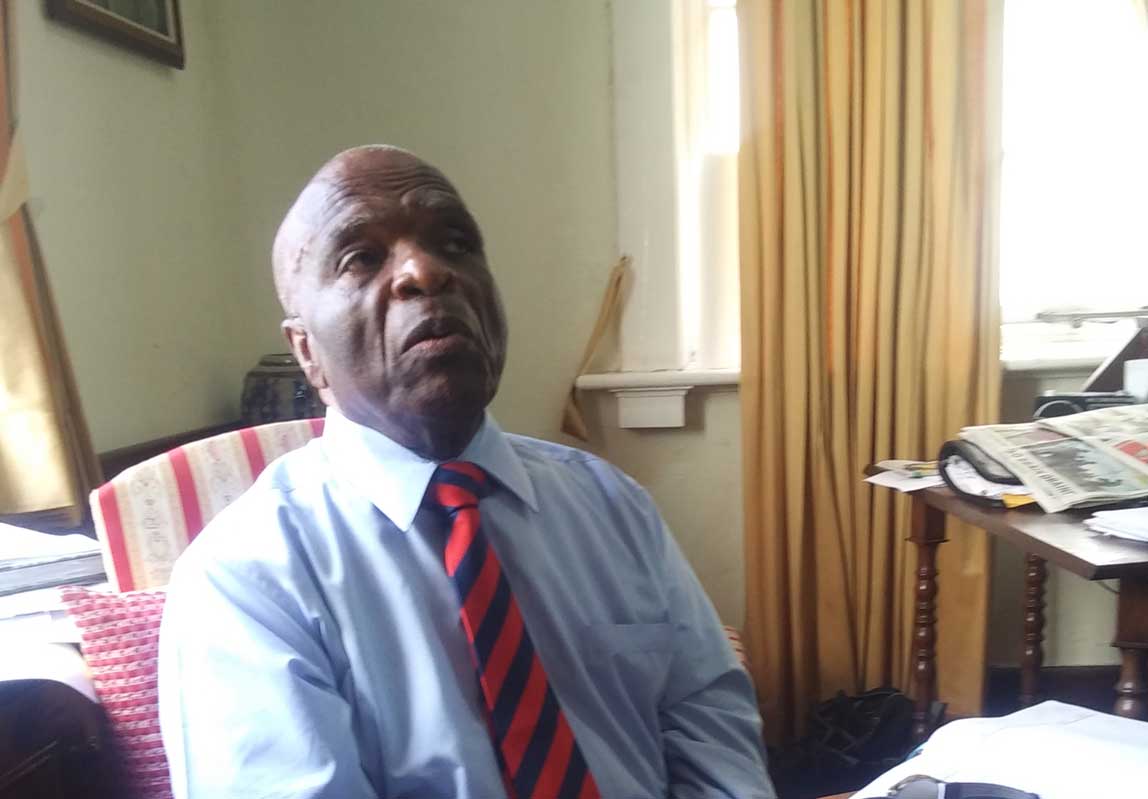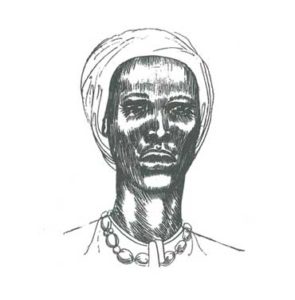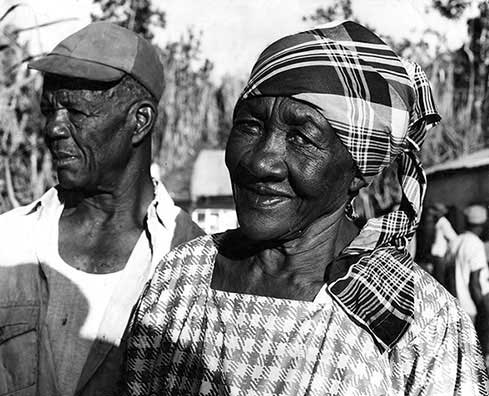There are five maroon communities in Jamaica, Flagstaff in St James, Accompong in St Elizabeth, Scotts Hall in St Mary, Charles Town and Moore Town both in the parish of Portland. However, not all true born maroons live in these semi-autonomous enclaves and maroons are to be found all over Jamaica and in the Diaspora and in a variety of professions and positions in both the public and private sectors.

Vivian Crawford O.D. is Executive Director of one of Jamaica’s most venerable institutions, the Institute of Jamaica and proudly claims himself to be a true born Maroon. He traces his roots to the Crawfords of Crawford Town, Charles Town near Buff Bay in Portland. Crawford Town no longer exists but can be found on 18th century maps of Jamaica. So to the question in maroon speech:
“Yeng king king” (Are you a maroon? ) Mr Crawford’s ancestors would respond “swei swei” indicating ‘Yes’ in English. Here is a sample of common maroon words shared with jamaicaglobalonline by Crawford:
kimbambu fire
eshu water
insa rum
pickebo young child
prandez house
ockooh chicken
afana machete
sahfuhouse meeting place
obroni stranger (as in maroon not supposed to marry an obroni)
WHO IS A MAROON?
Crawford is adamant in insisting that Maroon is not a race but merely a description of a group of people who decided that they were not going to subject themselves to a way of life and formed themselves into a community. The origin of the descriptive word is important; he rejects description of the Spanish-originated word which means ’savage or wild’ and accepts the interpretation of a people who ‘marooned’ themselves from mainstream society. There are no physical features, speech patterns or outward appearances by which a maroon may be identified as being different from any other Jamaican. There are however, distinct traits and habits into which maroons are socialized and which influences their world view and relationships with people generally.
Characteristics of a Maroon

While there are no physical attributes by which a maroon may be readily identified, Crawford offers some insights into the maroon personality and some unusual habits that are directly related to their historical experiences. Speaking for himself, the most outstanding characteristic is confidence, confidence, confidence! The present day generation of young maroons, just like his and past generations, are intensely proud of their heritage but never boast about it. They are taught never to disgrace themselves and are brought up by a rigid set of values that is replicated in every maroon community. Maroon parents know that its “not you alone that grow your pickney”, so children are controlled not just by parents but by the community’s values. Those controls still exist and explain the low level of crime in maroon communities where murders are virtually unknown throughout their entire history.
DID YOU KNOW
- True born maroons do not like to eat in public? It stems from the fear of deception from an incident dating back to 1790 when the British tricked the maroons from Flagstaff into journeying to Montego Bay under the guise of a reconciliation. Instead they were rounded up and shipped off to Nova Scotia in Canada from where those who did not die from the cold were sent to Sierre Leone in West Africa. Since then maroons have learned to be cautious.
- True born maroons from the Moore Town side, especially women nursing babies do not eat goat’s meat? Aversion to the goat is a response to the fact that when maroons were in hiding, goats made noises that gave them away; pigs didn’t!
- The name given to the place known as ‘Maroon Town’ was in fact NOT a maroon settlement but according to Vivian Crawford “was the first ever ZOSO” – an encampment created by the British authorities to control the maroons at Flagstaff.
- Maroons were accustomed to walking long distances and preferred to walk at night because it was cooler. Crawford relates the story told to him by his grandmother of being with a party of 18 which walked from Moore Town to attend the Great Exhibition of 1891 which was held in Kingston on grounds now occupied by Mico University and Wolmers School. They began the journey at 3 a.m. by walking to Berrydale, then went by raft to Charles Town arriving at 11 a.m. where they rested until 3 a.m the following morning before resuming the journey up the Buff Bay valley to Newcastle then down to Papine where they boarded the tram. They spent 3 days at the Exhibition before setting out on the return journey to Moore Town.
THE LESSON OF EDUCATION
Maroons learned to appreciate the value of education very early in their existence and they learned it the hard way. When in the mid-1730s Cudjoe of the Accompong maroons was about to sign a treaty with the British to end the first maroon war, his sister Nanny walked from Moore Town in Portland all the way to Accompong in St Elizabeth to beg him not to sign the treaty which was of course written in English. Nanny’s reasoning, according to Crawford was that “you cannot sign a treaty in a language you do not understand”. Nanny’s instincts were correct because that treaty included the clause that bound the maroons to capture all runaway enslaved from the estates and return them to the authorities. To this day, acceptance of that clause and their compliance (including helping the authorities to quell the Morant Bay Rebellion) remains for Crawford, the greatest indictment against all maroons. Thereafter, education became a priority for maroons who wanted to learn to read and write. With the establishment of the first Anglican church at Moore Town in 1804 came one of the earliest elementary schools founded by the Church.
Up to 1892 children had to pay a fee to attend primary school?
Vivian Crawford’s grandmother paid a penny to attend primary school from Monday to Thursday between the ages of 7 and 10 and a penny-half penny between the ages of 11 and 15. In those days a penny could buy a pound of beef!
JERKING PORK THE MAROON WAY
These days there are jerk stands all over Jamaica and on the menus of the fanciest restaurants in London and New York but their method of preparation bear little resemblance to those used by the maroons in the over 150 years when they remained hidden in the Jamaican interior. There, the wild boar was both a pest destroying their crops and a source of food borne out of necessity. According to Vivian Crawford, “ what is served as jerk pork these days is pot roast for Sunday dinner.”

The maroon way of jerking is peculiar both in the preparation of the spices and in the actual method of cooking. A crucial ingredient missing from today’s concoction is the pepper elder bush. On slaughtering the pig, half a pint of its blood is saved to be added to coarse salt, and pounded with the pepper elder bush, pimento and other spices and left overnight. Next day the concoction is then boiled for about an hour and a half while the pork is hung from rafters to be dried of its dripping water and fat. After the spiced concoction is added the pork is placed back side on the barbecue and cooked slowly through a combination of hot coals and smoke. Fancy jerking like that in a North Coast hotel or a New York restaurant?
See Also: The Maroons Part I – A Story of Freedom and Defiance



1 comment
Great Article need more information on the Maroons. It is so easy to misconstrue information I am sure more than 50% of Jamaicans @home or abroad don’t know alot about the Marrons . I believe that my late father was of Maroon decent and I have always wanted to research the history of the Jamaican Maroons. I would appreciate road may to find the relevant information regarding The Jamaican Marrons.
Comments are closed.